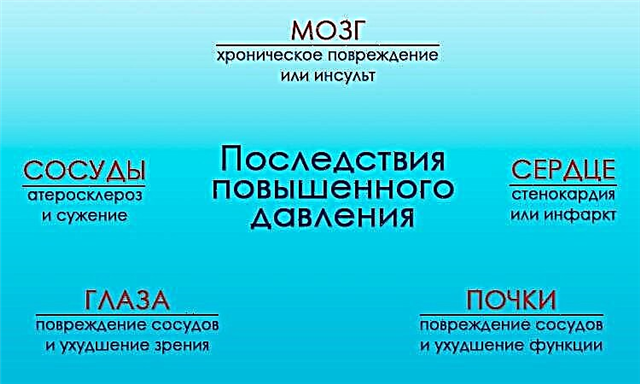The eardrum can be thought of as a very small and thin membrane, which is located in the border zone, delimiting the outer and middle parts of the ear.
What is tympanic membrane perforation?
 This is the state in which a hole appears in it. In other words, a rupture of the ear membrane occurs. It occurs as a result of injuries or inflammatory diseases. Damage to the membrane is almost always characterized by its rupture, due to which errors in sound vibrations are observed, and a person's hearing becomes dull. Any injury to the tympanic membrane is dangerous because it is the gateway for infections that penetrate directly into the middle ear. In this case, it is complicated by otitis media. It is for this reason that it is very important to recognize the problem in a timely manner and immediately begin to fix it.
This is the state in which a hole appears in it. In other words, a rupture of the ear membrane occurs. It occurs as a result of injuries or inflammatory diseases. Damage to the membrane is almost always characterized by its rupture, due to which errors in sound vibrations are observed, and a person's hearing becomes dull. Any injury to the tympanic membrane is dangerous because it is the gateway for infections that penetrate directly into the middle ear. In this case, it is complicated by otitis media. It is for this reason that it is very important to recognize the problem in a timely manner and immediately begin to fix it.
What causes the ear to be damaged
Can the eardrum burst? This question is sometimes asked by patients to an otolaryngologist. Of course. This is usually due to several factors. Let's list them.
- Perforation of the tympanic membrane with otitis media. Inflammation inside the ear is accompanied by the accumulation of fluid (or pus) that separates from there. There comes a moment when its outflow is difficult, and pus begins to press on the membrane. There is a risk of destruction of the latter. Under the pressure of the fluid being separated, the membrane becomes thinner and torn. Now it can no longer function as a barrier that separates the middle ear from the outside world.

- Tympanic membrane rupture due to pressure. Examples include sneezing with pinched fingers, sudden submersion, and being on board an aircraft during takeoff or landing.
- An unexpected and very loud noise (usually an explosion). Such a strong sound can lead to the formation of a hole in the eardrum. This is fraught with partial hearing loss.
- Mechanical injury. It is usually obtained by trying to clean the ear with objects that are not at all intended for this. Among the most common, otolaryngologists call a paper clip, a match, a needle, and the like. You can also get injured by inadvertently using thin piercing objects.
- Thermal injury. A hot liquid acts on the membrane. Not only blacksmiths and metallurgists at work can get such an injury, but also any person at home.
- If you use a cotton swab to hygiene your ears, foreign objects can get into your ears. Can you damage your eardrum with a cotton swab? Easy! Therefore, be extremely careful during the hygienic ritual of cleaning your ears.
Symptoms
 Literally in the first seconds from the moment of injury, a person feels sudden pain of an acute nature. After some time, it weakens, after which he has:
Literally in the first seconds from the moment of injury, a person feels sudden pain of an acute nature. After some time, it weakens, after which he has:
- makes a noise in the ears;
- pus is released from the ear or a colorless liquid (rupture of the tympanic membrane with otitis media);
- blood or ichor appears if the damage to the tympanic membrane is mechanical;
- hearing acuity worsens.
What happens if the eardrum is pierced? If the injury is deep enough and spreads to the inner ear, then the head will begin to spin. If the membrane has ruptured completely, air can escape from the damaged ear when you blow your nose and sneeze.
The severity of the listed symptoms depends on how serious the damage to the organ is. If the injury turned out to be insignificant, the painful sensations disappear rather soon, and the hearing acuity decreases very slightly. When the damage is severe, inflammation can cover the entire inner ear.
Treatment
 Is the eardrum repairing itself after injury? In many cases, it heals on its own, without medical intervention. If enough time has passed, and healing has not come, you need to be treated. After all, if the eardrum burst, the consequences will not slow down to remind you of yourself with a hearing loss, and in especially severe cases, with its complete loss.
Is the eardrum repairing itself after injury? In many cases, it heals on its own, without medical intervention. If enough time has passed, and healing has not come, you need to be treated. After all, if the eardrum burst, the consequences will not slow down to remind you of yourself with a hearing loss, and in especially severe cases, with its complete loss.
If the doctor, upon examination, found only a crack in the eardrum or a very insignificant perforation of the ear, he will cover the damaged area with a patch (it is made of plain paper). The doctor prepares the edges of the gap with a special preparation that stimulates the growth and regeneration of tissues. For a complete recovery, you will need 3-4 such events.
Operation
So, the doctor examined the eardrum. The damage is quite serious and large-scale. In this case, the help of a surgeon is needed. An operation that restores the integrity of the ear membrane is called myringoplasty (also called tympanoplasty).
 It is performed under general anesthesia. The surgeon makes a small incision in the skin over the damaged ear. This is necessary to take a thin piece of skin. It is his doctor who will adapt to patch the hole in the membrane. Then the doctor inserts a special microscope into the ear canal, after which he performs all further manipulations, already using it. He slightly lifts the membrane and substitutes a patch of leather to the hole formed in it. On both sides of the membrane, the surgeon applies absorbable material to hold the patch in position until complete healing.
It is performed under general anesthesia. The surgeon makes a small incision in the skin over the damaged ear. This is necessary to take a thin piece of skin. It is his doctor who will adapt to patch the hole in the membrane. Then the doctor inserts a special microscope into the ear canal, after which he performs all further manipulations, already using it. He slightly lifts the membrane and substitutes a patch of leather to the hole formed in it. On both sides of the membrane, the surgeon applies absorbable material to hold the patch in position until complete healing.
After a couple of weeks, there will be no trace of the material. During this time, the doctor covers the ear canal with a small swab soaked in an antibiotic to avoid infection.
Home treatment
 Eardrum perforation is no laughing matter. Therefore, an experienced doctor should treat. However, patients often prefer “grandmother's recipes” and home treatment. In principle, there is nothing wrong with that. But it is possible to engage in such self-medication only after preliminary consultation with the doctor, having secured his approval.
Eardrum perforation is no laughing matter. Therefore, an experienced doctor should treat. However, patients often prefer “grandmother's recipes” and home treatment. In principle, there is nothing wrong with that. But it is possible to engage in such self-medication only after preliminary consultation with the doctor, having secured his approval.
To speed up the healing of burst membranes, you need to enrich your diet with foods that contain large amounts of vitamin C. These are, first of all, citrus fruits, hawthorn and rose hips (you can make a wonderful decoction from it).
A small narrow gauze swab for the ear (called "turunda") is recommended to be impregnated with pine and plantain needles juice, as well as tincture of nightshade leaves (half a glass of alcohol per 2 tablespoons of leaves).
It should be noted that the hole in the membrane will persist long enough after all symptoms reminiscent of trauma have disappeared. Does the eardrum ever heal? Naturally. But for this it is necessary to constantly monitor the healing process. This will prevent hearing loss and complications.
Recovery
 People who have a ruptured ear membrane are often interested in how long it takes to heal after a rupture.
People who have a ruptured ear membrane are often interested in how long it takes to heal after a rupture.
First of all, you need to be aware that the healing time depends on a large number of various factors. However, one thing is certain: the larger the area of damage, the longer the recovery period will be. If liquid gets into the ear cavity (most often this happens during the process of washing the ear with a syringe), the hole will tighten worse. Does the eardrum get overgrown if a person suffers from concomitant ear diseases (for example, tympanosclerosis)? Yes, but they significantly complicate healing.
In most cases, the healing process takes 2 to 4 weeks. Otosurgeons have a rule: if after 3 months the torn membrane has not completely healed, intervention is required.
Prophylaxis
 Surely everyone knows the common medical truth: it is much easier to prevent any disease than to cure. So, diseases of the middle ear of an inflammatory nature (otitis media and so on) must be treated on time. If you begin to suffer from constant dull pain, tinnitus and hearing loss, you should immediately contact a specialist and in no case try to diagnose yourself on your own, and even more so - to prescribe yourself drugs - pharmacy or homemade. Read about online slot machines for real money on the site Vovpedia.ru slots with real money.
Surely everyone knows the common medical truth: it is much easier to prevent any disease than to cure. So, diseases of the middle ear of an inflammatory nature (otitis media and so on) must be treated on time. If you begin to suffer from constant dull pain, tinnitus and hearing loss, you should immediately contact a specialist and in no case try to diagnose yourself on your own, and even more so - to prescribe yourself drugs - pharmacy or homemade. Read about online slot machines for real money on the site Vovpedia.ru slots with real money.
If you are planning a flight, protect your ears while on board the airliner. To do this, you need to put on special headphones or suck on a lollipop (caramel). Alternatively, fill your mouth with chewing gum.
For hygienic cleaning of the ears from the accumulated sulfur in them, do not use sharp objects. This is one of the easiest ways to injure the thin ear membrane. It is also recommended to avoid loud noise.
Supervise your little ones constantly so that they do not stuff anything extra into their ear. This should be done in order to prevent rupture of the child's eardrum. It is advisable to inform children of a conscious age that playing with firecrackers and other explosive objects is extremely dangerous.



